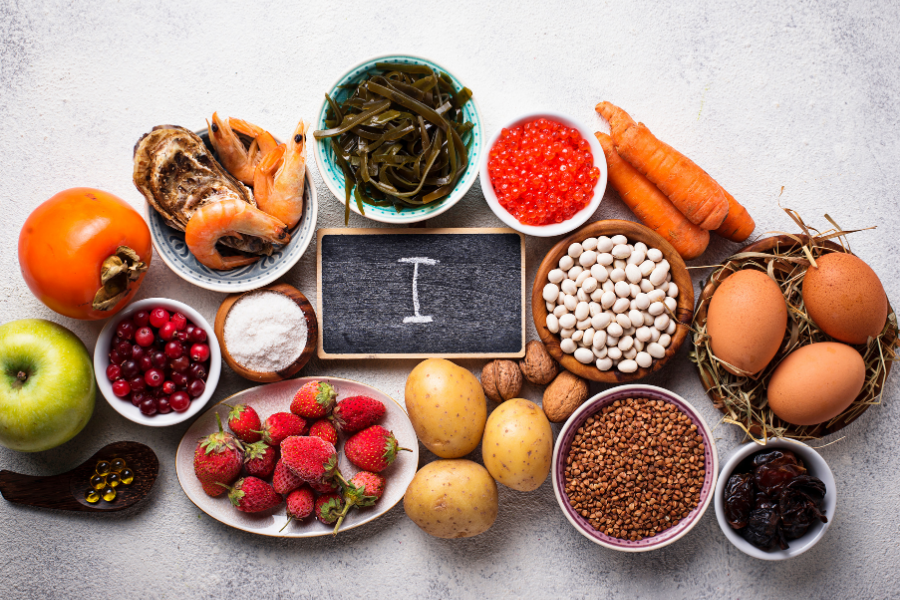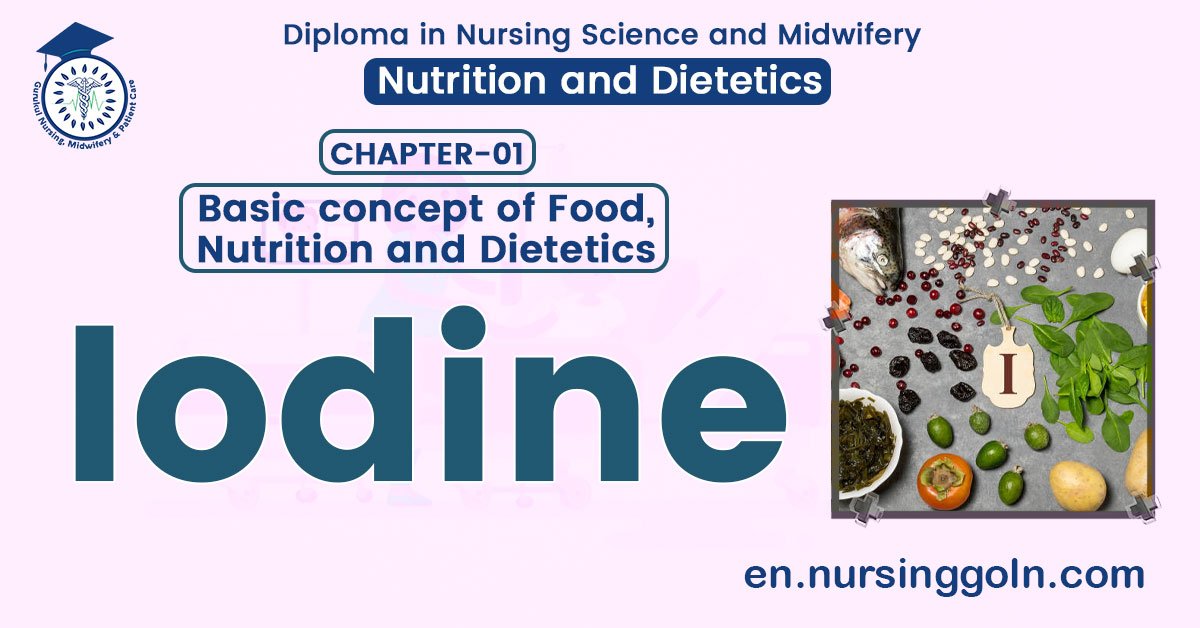Concept about Iodine – This book covers the entire syllabus of “Nutrition and Dietetics” prescribed by BNMC-for all Diploma in Nursing Science and Midwifery students. We tried to accommodate latest information and topics. This book is examination friendly setup according to the teachers’ lectures and examination’s questions. At the end of the book previous university questions are given. We hope in touch with the book students’ knowledge will be upgraded and flourished. The unique way of presentation may make your reading of the book a pleasurable experience.

Concept about Iodine
Iodine (I):
lodine is a constituent of thyroxine, the active principle of the thyroid gland. The thyroid gland, weighing about 25 mg a normal adult, contains only about 10 mg of lodine. The adult body as a whole contains about 50 mg of Iodine. The thyroid gland plays an important part in energy metabolism and in the growth of the body. About 1/3rd of iodine in the adult body is found in the thyroid gland where it is stored in the form of thyroglobulin. Iodine is essential for the production of thyroxin (T4) and tri- iodothyronine (T3).
Sources of iodine:
| 1. Best sources: |
|
| 2. Source with smaller amounts |
✔lodized table salt |
(Ref: T. K. Indrani/1/65)
Functions of Iodine
1. Iodine is required for the synthesis of the thyroid hormones-thyroxine (T4) and tri-iodothyronine (T3)
2. It is essential in minute amounts for the normal growth and development and wellbeing of all humans.
3. Iodine is needed for the oxygen consumption by the tissue.
4. lodine is required for the proper, functioning of nervous and muscular tissue, circulatory and metabolisms of nutrients.
(Ref: Onila Salin’s Essential nutrition/1/45)

Goiter:
Goiter can be defined as the swelling of the thyroid gland due to dysfunction of thyroid homeostasis resulting from iodine deficiency.
Effects of iodine deficiency:
A. Iodine deficiency disorders (IDD) /Endemic goiter: In children, severe iodine deficiency may result in serious retardation of growth. This condition is known as cretinism.
B. Other severe forms of iodine deficiency include:
1. Hypothyroidism.
2. Retarded physical development and impaired mental function.
3. Increased rate of spontaneous abortion and stillbirth.
4. Neurological cretinism, including deaf, mutism, and
5. Myxo-edematous cretinism, including dwarfism and severe retardation.

Daily requirements of iodine:
| Age group | Requirements |
| Infants and children | 40-120 µg |
| Adolescents | 140-150 µg |
| Adult | 150-160 µg |
| Pregnant mother | 175 µg |
| Lactating mother | 175 µg |
Metabolism of iodine:
lodine is ingested in foods as inorganic iodides and as organic compounds. In the digestive tract iodine is split from organic compounds and is rapidly absorbed as inorganic iodide. The degree of absorption is dependent upon the level of circulating thyroid hormone. Thyroid activity is controlled by the thyroid stimulating hormone (TSH) secreted by the anterior lobe of the pituitary.
Read more:
